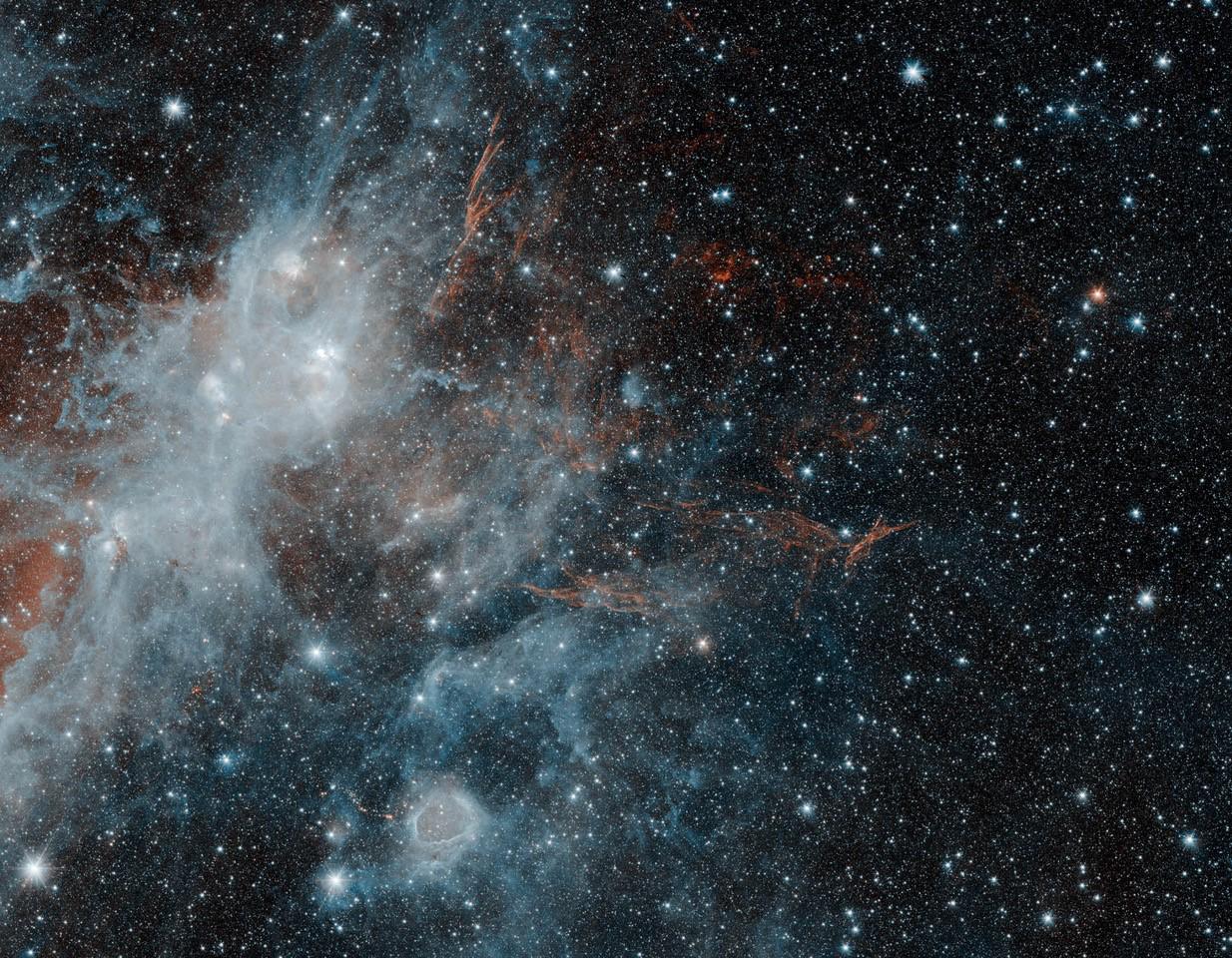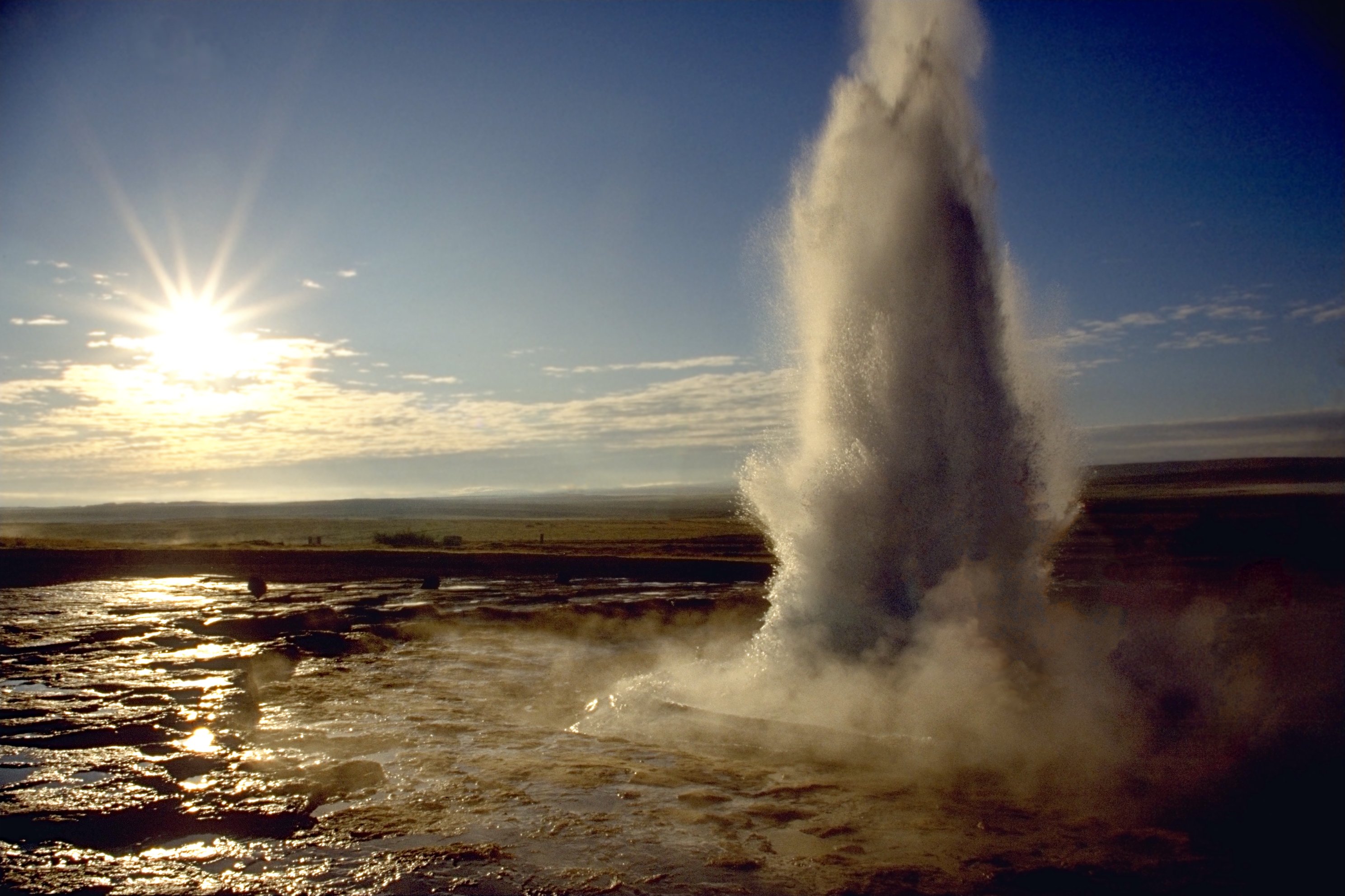|
Galactic Corona
The terms galactic corona and gaseous corona have been used in the first decade of the 21st century to describe a hot, ionised, gaseous component in the galactic halo of the Milky Way. A similar body of very hot and tenuous gas in the halo of any spiral galaxy may also be described by these terms. Current hypothetical scenario The hypothetical source of the galactic halo of ''coronal gas'' may be the cumulative output of many “galactic fountains” in the galactic disc ejecting hot gas. The hypothesis is that a single supernova and then its supernova remnant both produce hot ionized gas that supplies an individual “galactic fountain”. The expelled material forms a giant bubble of high-pressure, low density, hot gas in the denser, cooler gas and dust of the galactic disc. At least some of those bubbles extend high or low enough, vertically, to pierce through the denser disk, and form “chimneys” which exhaust the hot gas into the halo, analogous to a terrestrial ge ... [...More Info...] [...Related Items...] OR: [Wikipedia] [Google] [Baidu] |
Galactic Halo
A galactic halo is an extended, roughly spherical component of a galaxy which extends beyond the main, visible component. Several distinct components of galaxies comprise the halo: * the stellar halo * the galactic corona (hot gas, i.e. a plasma) * the dark matter halo The distinction between the halo and the main body of the galaxy is clearest in spiral galaxies, where the spherical shape of the halo contrasts with the flat disc. In an elliptical galaxy, there is no sharp transition between the other components of the galaxy and the halo. A halo can be studied by observing its effect on the passage of light from distant bright objects like quasars that are in line of sight beyond the galaxy in question. Components of the galactic halo Stellar halo The stellar halo is a nearly spherical population of field stars and globular clusters. It surrounds most disk galaxies as well as some elliptical galaxies of type cD. A low amount (about one percent) of a galaxy's stellar mas ... [...More Info...] [...Related Items...] OR: [Wikipedia] [Google] [Baidu] |
Milky Way
The Milky Way is the galaxy that includes our Solar System, with the name describing the galaxy's appearance from Earth: a hazy band of light seen in the night sky formed from stars that cannot be individually distinguished by the naked eye. The term ''Milky Way'' is a translation of the Latin ', from the Greek ('), meaning "milky circle". From Earth, the Milky Way appears as a band because its disk-shaped structure is viewed from within. Galileo Galilei first resolved the band of light into individual stars with his telescope in 1610. Until the early 1920s, most astronomers thought that the Milky Way contained all the stars in the Universe. Following the 1920 Great Debate between the astronomers Harlow Shapley and Heber Curtis, observations by Edwin Hubble showed that the Milky Way is just one of many galaxies. The Milky Way is a barred spiral galaxy with an estimated D25 isophotal diameter of , but only about 1,000 light years thick at the spiral arms (more at the bulg ... [...More Info...] [...Related Items...] OR: [Wikipedia] [Google] [Baidu] |
Spiral Galaxy
Spiral galaxies form a class of galaxy originally described by Edwin Hubble in his 1936 work ''The Realm of the Nebulae''Alt URL pp. 124–151) and, as such, form part of the . Most spiral galaxies consist of a flat, rotating containing s, gas and dust, and a central concentration of stars known as the |
Galactic Disc
A galactic disc (or galactic disk) is a component of disc galaxies, such as spiral galaxies and lenticular galaxies. Galactic discs consist of a stellar component (composed of most of the galaxy's stars) and a gaseous component (mostly composed of cool gas and dust). The stellar population of galactic discs tend to exhibit very little random motion with most of its stars undergoing nearly circular orbits about the galactic center. Discs can be fairly thin because the disc material's motion lies predominantly on the plane of the disc (very little vertical motion). The Milky Way's disc, for example is approximately 1 kly thick but thickness can vary for discs in other galaxies. Stellar component Exponential surface brightness profiles Galactic discs have surface brightness profiles that very closely follow exponential functions in both the radial and vertical directions. Radial profile The surface brightness radial profile of the galactic disc of a typical disc galaxy (view ... [...More Info...] [...Related Items...] OR: [Wikipedia] [Google] [Baidu] |
Supernova
A supernova is a powerful and luminous explosion of a star. It has the plural form supernovae or supernovas, and is abbreviated SN or SNe. This transient astronomical event occurs during the last evolutionary stages of a massive star or when a white dwarf is triggered into runaway nuclear fusion. The original object, called the ''progenitor'', either collapses to a neutron star or black hole, or is completely destroyed. The peak optical luminosity of a supernova can be comparable to that of an entire galaxy before fading over several weeks or months. Supernovae are more energetic than novae. In Latin language, Latin, ''nova'' means "new", referring astronomically to what appears to be a temporary new bright star. Adding the prefix "super-" distinguishes supernovae from ordinary novae, which are far less luminous. The word ''supernova'' was coined by Walter Baade and Fritz Zwicky in 1929. The last supernova to be directly observed in the Milky Way was Kepler's Supernova in 160 ... [...More Info...] [...Related Items...] OR: [Wikipedia] [Google] [Baidu] |
Supernova Remnant
A supernova remnant (SNR) is the structure resulting from the explosion of a star in a supernova. The supernova remnant is bounded by an expanding shock wave, and consists of ejected material expanding from the explosion, and the interstellar material it sweeps up and shocks along the way. There are two common routes to a supernova: either a massive star may run out of fuel, ceasing to generate fusion energy in its core, and collapsing inward under the force of its own gravity to form a neutron star or a black hole; or a white dwarf star may accrete material from a companion star until it reaches a critical mass and undergoes a thermonuclear explosion. In either case, the resulting supernova explosion expels much or all of the stellar material with velocities as much as 10% the speed of light (or approximately 30,000 km/s). These speeds are highly supersonic, so a strong shock wave forms ahead of the ejecta. That heats the upstream plasma up to temperatures well above mi ... [...More Info...] [...Related Items...] OR: [Wikipedia] [Google] [Baidu] |
Superbubble
A superbubble or supershell is a cavity which is hundreds of light years across and is populated with hot (106 K) gas atoms, less dense than the surrounding interstellar medium, blown against that medium and carved out by multiple supernovae and stellar winds. The winds, passage and gravity of newly born stars strip superbubbles of any other dust or gas. The Solar System lies near the center of an old superbubble, known as the Local Bubble, whose boundaries can be traced by a sudden rise in dust extinction of exterior stars at distances greater than a few hundred light years. Formation The most massive stars, with masses ranging from eight to roughly one hundred solar masses and spectral types of O and early B, are usually found in groups called OB associations. Massive O stars have strong stellar winds, and most of these stars explode as supernovae at the end of their lives. The strongest stellar winds release kinetic energy of 1051 ergs (1044 J) over the lifetime ... [...More Info...] [...Related Items...] OR: [Wikipedia] [Google] [Baidu] |
Geyser
A geyser (, ) is a spring characterized by an intermittent discharge of water ejected turbulently and accompanied by steam. As a fairly rare phenomenon, the formation of geysers is due to particular hydrogeological conditions that exist only in a few places on Earth. Generally all geyser field sites are located near active volcanic areas, and the geyser effect is due to the proximity of magma. Generally, surface water works its way down to an average depth of around where it contacts hot rocks. The resultant boiling of the pressurized water results in the geyser effect of hot water and steam spraying out of the geyser's surface vent (a hydrothermal explosion). A geyser's eruptive activity may change or cease due to ongoing mineral deposition within the geyser plumbing, exchange of functions with nearby hot springs, earthquake influences, and human intervention. Like many other natural phenomena, geysers are not unique to Earth. Jet-like eruptions, often referred to as cryoge ... [...More Info...] [...Related Items...] OR: [Wikipedia] [Google] [Baidu] |
Interstellar Medium
In astronomy, the interstellar medium is the matter and radiation that exist in the space between the star systems in a galaxy. This matter includes gas in ionic, atomic, and molecular form, as well as dust and cosmic rays. It fills interstellar space and blends smoothly into the surrounding intergalactic space. The energy that occupies the same volume, in the form of electromagnetic radiation, is the interstellar radiation field. The interstellar medium is composed of multiple phases distinguished by whether matter is ionic, atomic, or molecular, and the temperature and density of the matter. The interstellar medium is composed, primarily, of hydrogen, followed by helium with trace amounts of carbon, oxygen, and nitrogen. The thermal pressures of these phases are in rough equilibrium with one another. Magnetic fields and turbulent motions also provide pressure in the ISM, and are typically more important, dynamically, than the thermal pressure is. In the interstellar medium, ... [...More Info...] [...Related Items...] OR: [Wikipedia] [Google] [Baidu] |
Metal (astronomy)
In astronomy, metallicity is the Abundance of the chemical elements, abundance of elements present in an object that are heavier than hydrogen and helium. Most of the normal physical matter in the Universe is either hydrogen or helium, and astronomers use the word ''"metals"'' as a convenient short term for ''"all elements except hydrogen and helium"''. This word-use is distinct from the conventional chemical or physical definition of a metal as an electrically conducting solid. Stars and nebulae with relatively high abundances of heavier elements are called "metal-rich" in astrophysical terms, even though many of those elements are nonmetals in chemistry. The presence of heavier elements hails from stellar nucleosynthesis, where the majority of elements heavier than hydrogen and helium in the Universe (''metals'', hereafter) are formed in the cores of stars as they Stellar evolution, evolve. Over time, stellar winds and supernovae deposit the metals into the surrounding environme ... [...More Info...] [...Related Items...] OR: [Wikipedia] [Google] [Baidu] |
Galactic Astronomy
Galactic astronomy is the study of the Milky Way galaxy and all its contents. This is in contrast to extragalactic astronomy, which is the study of everything outside our galaxy, including all other galaxies. Galactic astronomy should not be confused with galaxy formation and evolution, which is the general study of galaxies, their formation, structure, components, dynamics, interactions, and the range of forms they take. The Milky Way galaxy, where the Solar System is located, is in many ways the best-studied galaxy, although important parts of it are obscured from view in visible wavelengths by regions of cosmic dust. The development of radio astronomy, infrared astronomy and submillimetre astronomy in the 20th century allowed the gas and dust of the Milky Way to be mapped for the first time. Subcategories A standard set of subcategories is used by astronomical journals to split up the subject of Galactic Astronomy: # abundances – the study of the location of elements hea ... [...More Info...] [...Related Items...] OR: [Wikipedia] [Google] [Baidu] |








.jpg)